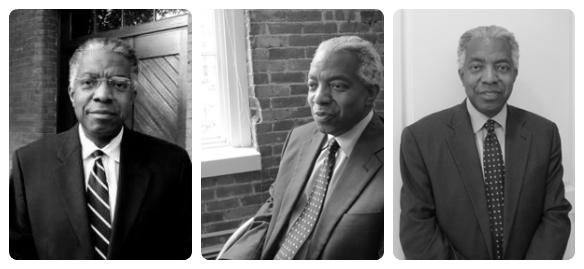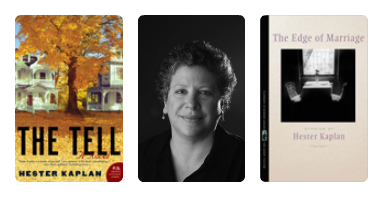October
________________________________________________________________________________________________________________________________________
Behind the Book takes an in depth look at the world of the book through articles and interviews about the creative process, issues in publishing, and the writing life.
________________________________________________________________________________________________________________________________________
Ray Rickman
By Leah Catania

Though Rhode Island has long had a storied history filled with tolerance and acceptance, in the early 19th century, the state was not immune to the rising tensions that gripped the rest of the United States. Race and class often came to a head in the poorer districts of Providence. The low rent in areas like Hardscrabble and Snow Town brought different races together, along with crime and businesses that were looked down upon by much of society. In 1824, a white mob formed and razed twenty homes in Hardscrabble that belonged to blacks. The riot in Snow Town seven years later resulted in the death of four whites by the militia called in to control the mob. Both riots were incited over minor or individual acts, but they caused the population of Providence to demand a stronger police force from their government.
When it comes to Rhode Island African American history, there are few people as well versed on the subject as Ray Rickman. On November 5th, at 4:30 p.m., he will be in the Mary Tefft White Center speaking as the last installment of the Talking in the Library Series. Interestingly, as a former State Representative, one of the bills he worked on established Rhode Island’s Poet Laureate position, currently held by our first speaker, Dr. Rick Benjamin, our first speaker in the Fall 2013 series. In addition to his lawmaker duties, Rickman has served as secretary of the Rhode Island Historical Society, and he was also formerly the president of The Rhode Island Black Heritage Society and is currently a Senior Advisor. On Tuesday, he will discuss the Providence race riots, how race and class were factors, and the demand for a larger police presence in the city.
________________________________________________________________________________________________________________________________________
An Interview with Hester Kaplan
By Leah Catania

Hester Kaplan’s first collection of short stories, The Edge of Marriage (1999), won the Flannery O'Connor Award for Short Fiction. The Tell (2011), her most recent novel, examines the ways in which gambling can tear apart a marriage. In the fall 2013 issue, Roger Williams University’s literary journal, Mount Hope published Kaplan's short novella "This is Your Last Swim." That publication includes her appearing in the Mary Tefft White Center's Talking in the Library Series on October 22nd. She teaches in Lesley University’s MFA in Creative Writing Program. Hester lives in Providence, Rhode Island, where we conducted the following interview by phone.
LC: Your novel The Tell incorporates so many different themes and idea. What was your first idea that served as inspiration for the rest of the novel?
HK: My first inspiration came from finding myself in a lot of casinos sort of by accident. I didn’t go there to gamble. I don’t gamble. I don’t like gambling at all. But in various places in the country, I found myself in casinos for one reason or another. I was just drawn to the people who were there, trying to figure out what was going on in this place that made me feel really so awful, so depressed. Then from there, I really thought, who was the most unlikely woman I could put in the casino and have become a slot machine addict? And that turned into Mira. And then I built a world around her. You know, I was interested in casinos but I’m most interested in marriage, particularly in this book. This was just a bad bump in the road for [Mira and Owen]. To further see whether this was even a viable idea, I did a lot of research on gambling, particularly women on slot machines, and ended up talking to a number of women who are addicted to slot machines. I found some of the stories so unbelievably devastating and hard to fathom, these quick demises that really seemed almost sudden and inexplicable to these women. One day they were not addicted, the next day they were hundreds of thousands of dollars in debt. It was really quite stunning. And living in Rhode Island, you can’t really ignore the conversation that goes on all the time about whether we will have a casino of our own. It just seems to be a topic that comes up all the time. So when I started writing the book, the idea of a casino in Rhode Island was very much in the air, and now it looks as though we have one.
LC: You include such vivid detail in your writing, and much of that detail is directly tied to the settings of the novel: Providence, Rhode Island and Cape Cod, Massachusetts. How did you decide which details to include and which might be too obscure?
HK: I’d like to think that no detail would be too obscure. That if it’s well enough drawn, it will be sort of “visible” to the reader. Rhode Island, particularly Providence, is a wonderful place to live as a writer because it’s so rich in really amazing contrasts. Wonderful stories, amazing contrasts—many of them upsetting, troubling—but it’s just a very rich and vibrant place to set a story. Particularly among the architecture, where Mira and Owen’s house is. Cape Cod—I really just have a passion for the place. I’ve gone my entire life. It really feels to me like the antidote sometimes to city living, even though I’m not sure I would call Providence city living so much. In my mind, the Cape is still a pure place. I don’t think it’s really like that but that’s my imagination. You have to look hard. But details, I don’t know. I think reading is an act that involves all your senses. Even as a reader, you’re not necessarily aware of it. But as a writer, to be precise about smell and sound and all the senses, I really believe that helps draw in the reader, and brings them fully into a story.
LC: Do you think that The Tell would have turned into a different story if you had chosen a different city or state?
HK: I do think so. There is a real flavor about Rhode Island. In the book, there’s a section where Owen goes downtown, and he talks about the city gangs that are proud of being almost backward. That’s really how I feel. People are very protective of status quo in Rhode Island. For better or for worse. But yes, a very different story in another place. Absolutely. I can’t tell you what that story would be, but yes.
LC: So you never even considered a setting other than Rhode Island?
HK: I was firm in Rhode Island, absolutely. I had set some stories here, but I had never written a novel here. In Providence, I am just fascinated by the architecture. That was a way every day to sort of brighten the picture for myself. To walk around or drive around and look at these houses—and people do take an enormous amount of pride in their houses, I think, in Providence—as I’m sure they do in other parts of the state too. People are proud of the history of Providence. And it shows in the architecture. I think in some ways it must sort of bleed into how people view the city itself and their place in it. Very steeped in history.
LC: That actually brings me right to my next question. Did you intend for the Thrasher house, with all of its rooms, objects and portraits, to be a character in itself?
HK: Yes, and I’ve seen the power that houses have over people. Certainly they’ve had power over me. Not houses I’ve ever owned, but for instance my grandparents’ house, which in my memory as a child was just this enormous, labyrinthine place full of mystery and secret rooms and hidden spaces, that sort of thing, and it was just a wonderful place to let the imagination go wild. You could imagine anything happening in those rooms. So I do love the idea of people being almost captive to their homes. I don’t mean that I love it in terms of that’s how I would like to live, but that they do feel that they interact with their homes in the way that they might interact with another person. They have an intimate relationship with their home. It’s often love and it’s often hate.
LC: Can you tell me more about the writing process you went through while working on the novel?
HK: Well, I think for me the most memorable part of the process was that I had worked for about three years on the book, and it had the same characters, but it was set somewhere past Warwick, and it took place at a point in time after the events that are in the book now. I’d worked on it for about three years and I had this just sinking feeling that I was starting the book in the wrong place. I kind of pushed that feeling aside for quite awhile until I just couldn’t ignore it anymore. And then I realized I had to essentially ditch what I had done and start the book from a different place, from a different time. All the interesting stuff, where the heart beat the loudest in what I had written, was all in the past. You can’t really—I can’t really write a book that way. I needed to be unfolding in the present. So that was part of the process: finally admitting to myself after way too long that I needed to put it down and start over again. And then, for me, writing a novel, which is not my more natural form I don’t think, is a sort of circular process. I start it at almost an arbitrary point and just circle over and over again, so it’s just layering and layering on. So by the time I’ve finished one draft, I know so much more about the characters than I did when I’d begun. Then I go and circle over it again. At a certain point I just have to say “Okay, stop, that’s enough , now you’re driving yourself and everybody else crazy.” I know the book is done when I get to a point where I say “Okay,” to these characters, “You’re on your own. I cannot deal with your problems anymore. Really, you know, just stop complaining and just go do something. I’m done with you.” And that’s a nice feeling: “Okay, I’ve put in my time, you’re on your own now, see ya.” That’s really part of my process. And most of my process is just basically sitting down and working at it. I don’t ever believe there’s any sort of secret process. It’s just a long, long, haul and a lot of very careful attention and intention.
LC: You have a novella and a collection of stories coming out in the spring, correct? Is there anything else you’ve been working on?
HK: The novella is part of a new collection of stories, called Unravished. I’m putting the finishing touches on that collection. That’s stories written over the past five or six years. I’m always writing a story if I’m working on a novel, and if I’m working on a novel, I’m working on stories; I think one will give me relief from the other. Of course that’s pretty much just an illusion. So that collection is coming out, and then I’m toying with something that I’m refusing to call a memoir. I’m calling it instead a nonfiction narrative, because I think the word memoir is a little too loaded. And again, it is centered around a house. It’s really very very much about a particular house that I grew up in in Cambridge, Massachusetts in the ’60s and ’70s. At this point, I’m sort of poking around the edges of that. I have not quite committed to it yet. In between, I’m writing stories. I just finished a new one last week, but I’m sort of anxious to get going on some others. In the meantime I do a lot of teaching. That can often take some of the writing time up. I try not to let it too much, but it often does.
LC: Now do the stories and the novella coming out in the spring mostly focus around marriage as well?
HK: That’s an excellent question. No, they’re. . . Let me see, yes, they’re about marriage. For the most part, they’re about marriage. They’re about slightly older, or longer married people now, trying to take a look at where they are and some of the decisions that they’ve made. I also think that they’re a sort of—people might argue with this—but a sunnier bunch of stories than I generally write. People often say that I write stories that are very depressing, and very dark and claustrophobic, (And that happens to be the kind of stuff that I like to read!) But with these I’m trying to interject, or inject, a lot more joy and playfulness into the narratives. One of the stories, the “Aerialist,” which is about a man who loses a tooth and sort of bonds (bonds, there’s a nice pun) with his dentists who puts in a new tooth for him while they both watch an aerialist. It was just a real pleasure to write. It was almost like learning how to fly a trapeze myself. It was really quite different. I always hope to get back into that state, whatever that state of writing was. I hope to find that again someday. Hopefully tomorrow. Or after I get off the phone with you even.
LC: I actually thought you did a fantastic job injecting just a little humor to balance the darker subjects in The Tell, as well as the novella being published in Mount Hope, “This Is Your Last Swim”.
HK: Good, good. The thing that’s always sort of confounded me a little bit is that I don’t consider myself— in terms of my writing, I’m very serious in my career, I’m very serious—but I’m really sort of a big goofball. I make lots of jokes. I love dirty jokes. One of my favorite movies is Jackass. I will laugh at anything, it doesn’t matter how dumb. So I think that’s sort of part of my inclination, to show that there’s often humor in every situation. Sometimes it goes over the line, but you can always laugh. That sounds a little bumper sticker-ish, but it’s important to see the humor in situations too.
________________________________________________________________________________________________________________________________________
Rhode Island and its Native American Heritage:
A Lesson for Today
By Leah Catania

As Rhode Island celebrates the 350thanniversary of its royal charter this year, founder Roger Williams’ progressive ideas continue to circulate. His passion for equality extended to all areas of his life, including, most notably, the Native Americans in the area that would become Rhode Island. Tribes such as the Narragansett and Wampanoag lived, farmed,
travelled and hunted for several thousand years in the area before the Europeans stepped off their ships. In fact, it was the Wampanoag that first took in Roger Williams following his banishment from the Massachusetts Bay colonies. Williams’ ideals were so inclusive that he refused to simply settle wherever he pleased, as most colonists did, so he paid the Narragansett for the land he called Providence and continued his peaceful negotiations with the tribes in the area.

The legacy of the Native tribes is still very much a part of our state’s identity. As Roger Williams University honors the life of our namesake, we need not do anything more than look out of our campus windows to see Mount Hope rising gently on the horizon, one of the most important Native American sites in Rhode Island. In a nearby swamp, Wampanoag sachem Metacomet’s murder marked the turning point in King Philip’s War, the most destructive conflict in New England during the 1600s. As richly documented by Nathaniel Philbrick in Mayflower (the University’s 2013 Common Reading selection), Roger Williams tried his hardest to prevent the war, but could not reconcile the two sides.
Today, when understanding and tolerance are so important to our state, we can look at Mount Hope and recall what happened in the past when our founder’s ideals were ignored in favor of violence and bloodshed.
As part of the Talking in the Library Series, archaeologist and anthropologist and RWU adjunct professor, Alan will be speaking about his work at Rhode Island’s archaeological sites on Tuesday, October 8th, at 4:30 p.m. With twenty-five years of experience in cultural resource management, Leveillee’s focus is on sharing information gleaned from archaeological research with nonprofessional audiences. Currently, he works as a principal investigator for the Public Archaeology Laboratory, lectures for the Rhode Island Committee for the Humanities, and serves as an advisor at four local museums.
In the Mary Tefft White Center, Leveillee will discuss archaeological finds from as far back as 11,000 years ago, what those artifacts can tell us about the populations that lived off the same soil we walk on every day, and how those ancient peoples are related to present-day Native American tribal groups.
________________________________________________________________________________________________________________________________________
Connect with the RWU Library on Facebook and Twitter!


